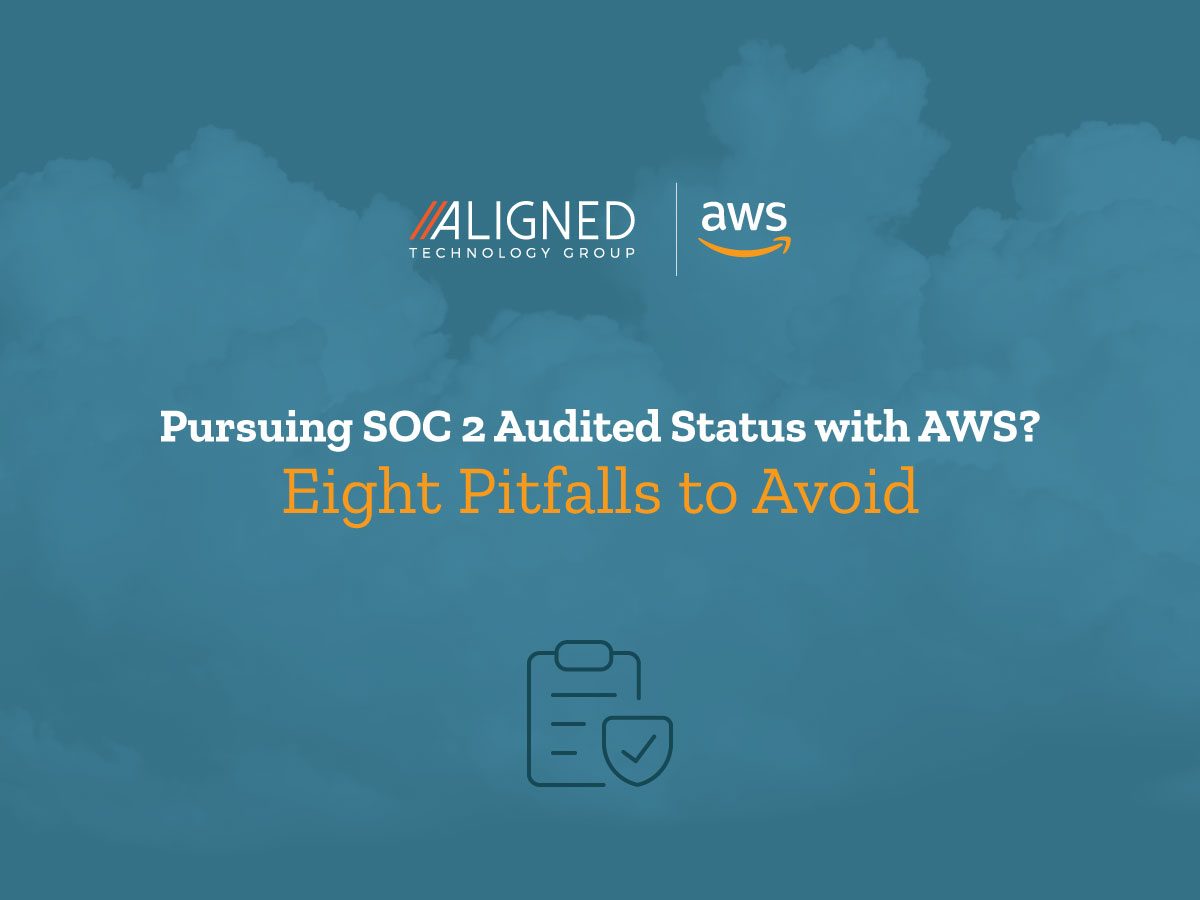
Eight Pitfalls to Avoid When Pursuing SOC 2 Audited Status with AWS
Pursuing SOC 2 audited status is no small task, but if done correctly, it can provide organizations with a competitive advantage and increased customer confidence. By understanding the process, having the right resources and documentation, and addressing any findings promptly, organizations can successfully achieve SOC 2 audited status.
Here are eight pitfalls to avoid on your journey:
- Not having a clear goal in mind: Before embarking on the process, it’s important to understand why you are pursuing SOC 2 audited status. Are you looking to increase customer confidence, meet regulatory requirements, or build a competitive advantage? Having a clear goal will help guide the process.
- Not understanding the process: SOC 2 is a complex process and it’s important to understand the requirements and timeline. Your organization should create a plan outlining the steps and tasks that need to be completed to ensure successful completion.
- Not having enough resources: Pursuing SOC 2 audited status requires significant resources in terms of time and money. Organizations should ensure they have the staff, tools, and budget to complete the process.
- Poor communication: Communication between the organization and the auditors is key for the process to run smoothly. Establishing clear lines of communication and expectations will help things proceed more quickly.
- Not testing the controls: SOC 2 requires organizations to test their controls to ensure they are working as expected. Organizations should test the controls regularly to ensure they are effective and working correctly.
- Not having the right documentation: SOC 2 requires organizations to have adequate documentation to prove their controls are working as expected. Organizations should ensure they have the necessary documentation and that it is up to date.
- Not addressing the findings: If the auditors find any areas of non-compliance, it’s important to address them promptly. The organization should develop a plan to address any findings and ensure they are remediated in a timely manner.
- Not understanding the AWS Shared Responsibility Model: Understanding the AWS Shared Responsibility Model is a critical part of meeting compliance requirements. It is important to understand this model because it outlines the divisions of responsibility between AWS and its customers. This helps both parties be aware of their specific roles in maintaining security and compliance. By understanding this model, customers are better able to allocate resources and implement the necessary security measures to ensure compliance. Additionally, it is important to note that AWS is responsible for the security of the cloud and the customer is responsible for securing their workloads and data on the cloud. Having a clear understanding of the shared responsibility model allows customers to ensure that they are meeting compliance requirements.
Don’t gamble with your SOC 2 compliance journey! Our skilled team is here to support you every step of the way. We can help you avoid problems and ensure a successful audit process by leveraging our extensive expertise and experience. Take the first step toward enhanced consumer trust, competitive advantage, and regulatory compliance. Contact us today for a no-obligation consultation and let us assist you in achieving SOC 2 audited status with simplicity and confidence!
Manny Landron
Last Updated on July 8, 2024 by Lauryn Colatuno

